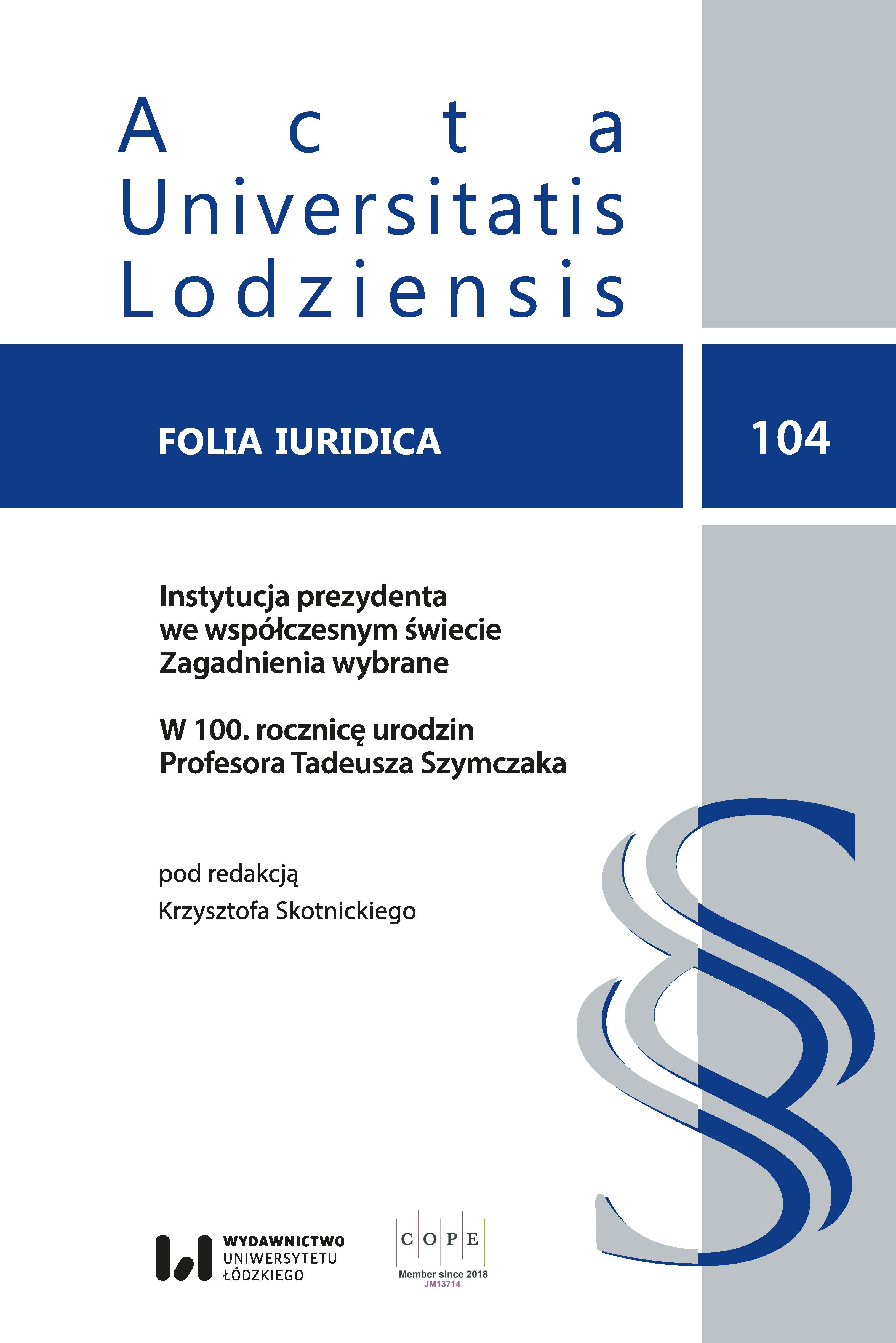Adaptacja prezydenckiego systemu rządów w państwach Azji Południowo-Wschodniej na tle literatury anglojęzycznej
The adaptation of the presidential system of government in the countries of South-Eastern Asia on the background of English literature
Author(s): Anna MichalakSubject(s): Law, Constitution, Jurisprudence, Constitutional Law
Published by: Wydawnictwo Uniwersytetu Łódzkiego
Keywords: president; presidential system; Southeast Asia; presidency model; democratization
Summary/Abstract: The presidential system has been criticized for a long time, especially by political scientists. This system is characterized by a rigorous division (separation) of the legislative and executive powers and the combination of the functions of the president and the head of government. Pursuant to these principles, the president (as an organ of executive power) has full executive power and is exempt from responsibility before the parliament. Critics argue that this is a system that leads to instability in power. Recent research conducted in this regard on the governments of Southeast Asian countries that have adopted the presidential system of government seem to contradict this thesis. As a consequence, the presidential system of government has its supporters and opponents, strengths and weaknesses. Nevertheless, its characteristics do not in themselves prevent the construction of a lasting presidential democracy. How the presidential system of government will function in practice depends not only on the adopted formal institutional framework, but also on such variable and non-obvious factors as the personality of political actors, the party system, or – not only general – cultural issues.
Journal: Acta Universitatis Lodziensis. Folia Iuridica
- Issue Year: 2023
- Issue No: 104
- Page Range: 119-128
- Page Count: 10
- Language: Polish

